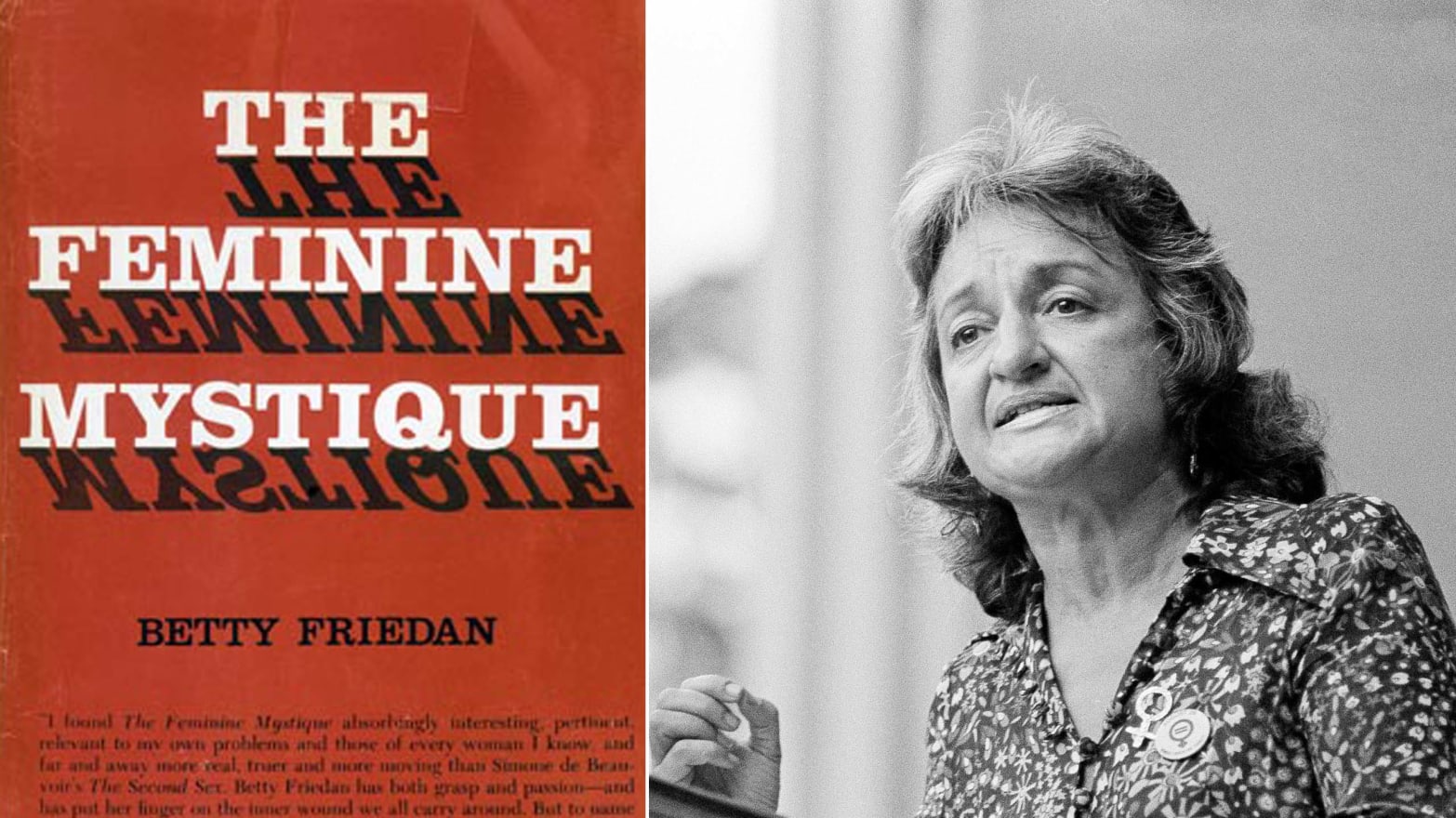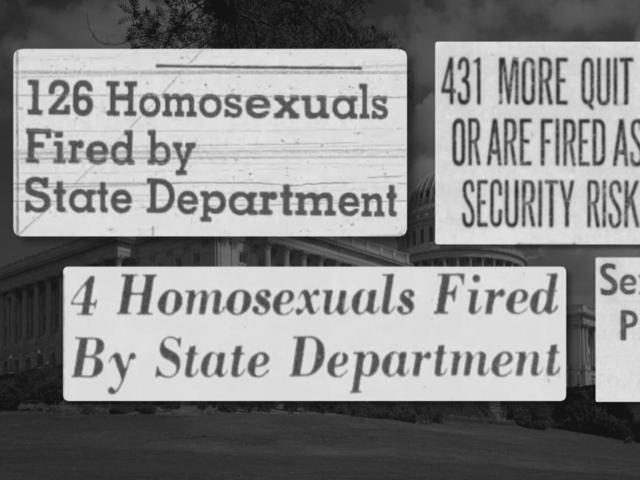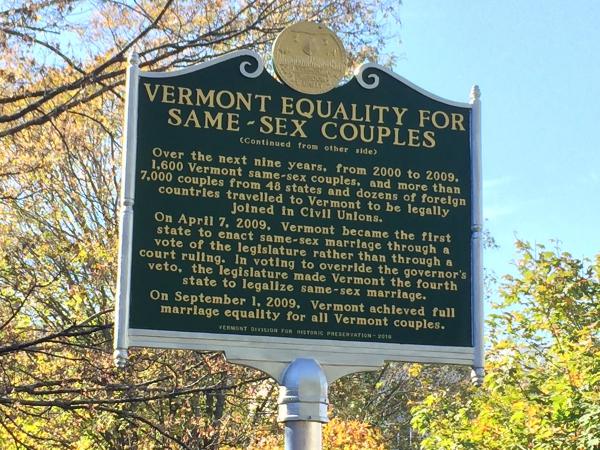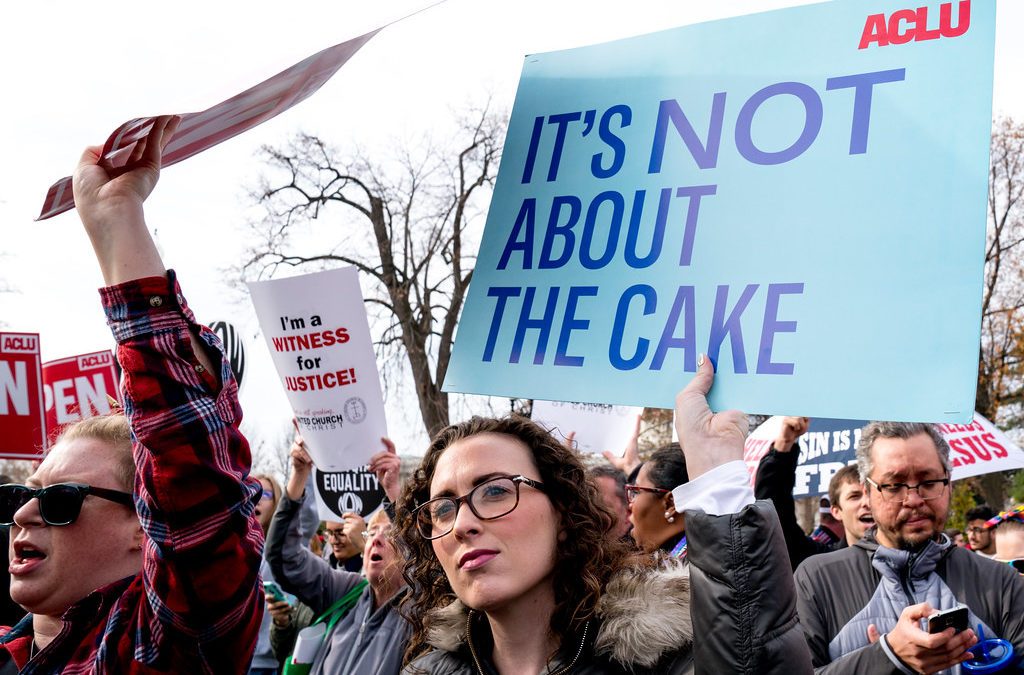8.11 The Expansion of the Civil Rights Movement
13 min read•june 18, 2024
Dalia Savy
Robby May
AP US History 🇺🇸
454 resourcesSee Units
This study guide will focus on key social movements and court cases that shaped individual liberties in the United States during the Warren Court era. We will examine the Women's Movement, which fought for gender equality and women's rights, the Gay Liberation Movement, which advocated for LGBTQ+ rights, the American Indian Movement, which sought self-determination and sovereignty for Indigenous peoples, and affirmative action policies, which aimed to address past discrimination and promote diversity in education and the workforce. Through an analysis of these movements and the legal decisions that impacted them, we will gain a deeper understanding of the ongoing struggle for civil rights and equality in America.
Warren Court and Individual Liberties
The most active impulse for social change in the early 60s came from a surprising source: the usually conservative Supreme Court. Under the leadership of Chief Justice Earl Warren, the Court ventured into new areas. He had an impact on the nation comparable to John Marshall in the early 1800s. The court issues a series of landmark decisions that extended the traditional rights given in federal courts to state and local courts:
Brown v. Board of Education | desegregating schools |
Mapp v. Ohio | ruled that illegally seized evidence cannot be used in court against the accused. |
Gideon v. Wainwright | gave every person the right to an attorney whether or not they could afford one. |
Miranda v. Arizona | ensured that everyone, at the time of their arrest was made aware of their rights. |
Baker v. Carr | The principle of “one man, one vote” greatly increased the political power of cities at the expense of rural areas and involved the Court directly with the reapportionment process…frequently forcing judges to draw up new legislative and congressional districts |
Engel v. Vitale | decision banned school prayer. |
Griswold v. Connecticut | ruled that, in recognition of a citizen’s right to privacy, a state could not prohibit the use of contraceptives by adults. (the right to privacy laid the foundation for later cases establishing a women’s right to an abortion) |
Women’s Movement
Women were active in the civil rights and anti-war movements. The civil rights movement and the sexual revolution all contributed to a renewal of the women’s movement in the 1960s.
The National Organization for Women
Betty Friedan’s book The Feminine Mystique gave the movement a new direction by encouraging women to seek fulfillment in professional careers in addition to filling the roles of wife, mother, and homemaker. In 1966, Friedan helped found the National Organization for Women (NOW), which adopted the activist tactics of other civil rights movements to secure equal treatment of women, especially for job opportunities.

Image Courtesy of The Daily Beast
By this time, Congress had already enacted two antidiscrimination laws: the Equal Pay Act of 1963 and the Civil Rights Act of 1964 which prohibited discrimination in employment and compensation on the basis of sex, but they were poorly enforced.
Although women still experienced the “glass ceiling” in the corporate world, American society at the beginning of the 21st century was less and less a man’s world.
In 1972, Congress responded by voting to send the Equal Rights Amendment to the state legislatures. This proposed Constitutional amendment stated, “Equality of rights under the law shall not be denied or abridged by the United States or by any state on account of sex.” NOW and other groups worked hard to ratify this Amendment, but it just missed acceptance by 3 states of the 38 required states. In 2019, the 38th state ratified it, but the deadline had long passed.
Title IX
Title IX of the Education Amendments Act of 1972 (amending the Civil Rights Act of 1964) forbids gender discrimination in federally subsidized education programs, including athletics. This means that colleges must offer comparable opportunities to women. Schools don’t have to allow females to join football and wrestling teams, though some have, nor must schools have precisely the same number of student-athletes from each gender.

Image Courtesy of American Enterprise Institute
Colleges must make opportunities available for male and female college students in substantially proportionate numbers based on their respective full-time undergraduate enrollment. Schools must also try to expand opportunities and accommodate the interest of the underrepresented sex.
The Court in 1996 included single-gender schools in this. They declared that Virginia’s categorical exclusion of women from educational opportunities at the state-funded Virginia Military Institute violated women’s rights to equal protection of the law.
Sexual Harassment
In 1986, the Supreme Court ruled that sexual harassment creates unlawful discrimination against women by fostering a hostile work environment and is a violation of the 1964 Civil Rights Act. Sexual harassment became a major issue in 2017 when a number of women came forward to accuse men in prominent positions in government, entertainment, and the media of sexual harassment. In a number of cases, the accused men lost their jobs and the victims received financial compensation.
In a show of solidarity and to demonstrate how widespread the problem of sexual harassment is, the #MeToo movement went viral. Anyone who had experienced sexual harassment or assault was asked to write #MeToo on their social media.
A 2016 report by the Equal Employment Opportunity Commission found that between 25% and 85% of women experience sexual harassment at work, but most were afraid to report it for fear of losing their jobs.
Gay Liberation Movement
Important Terms to Know
The state and federal governments had long set policies that limited the freedoms and liberties of LGBTQ citizens.
- LGBTQ: The acronym for “lesbian, gay, bisexual, transgender, and queer.” Some people also use the Q to stand for "questioning," meaning people who are figuring out their sexual orientation or gender identity. You may also see LGBT+, LGBT*, LGBTx, or LGBTQIA. I stands for intersex and A for asexual/aromantic/agender. The "A" has also been used by some to refer to "ally."
- Gender: The societal constructions we assign to males and females. When you hear someone say "gender stereotypes," they're referring to the ways we expect men/boys and women/girls to act and behave.
- Cisgender: A person whose gender identity aligns with the sex they were assigned at birth.
- Queer: Originally used as a pejorative slur, queer has now become an umbrella term to describe the myriad ways people reject binary categories of gender and sexual orientation to express who they are. People who identify as queer embrace identities and sexual orientations outside of mainstream heterosexual and gender norms.
Hostility toward homosexuality had deep roots in American society.
- State sodomy laws criminalized homosexual acts.
- Federal immigration laws excluded homosexual aliens.
- Hollywood's "Production Code," adopted in 1934, prohibited the depiction of gay characters or open discussion of homosexuality in film.
- The American Psychiatric Association's diagnostic manual defined homosexuality as an illness.
- During the McCarthy era, the charge that homosexuals were "moral perverts" and security risks led the government to adopt rules explicitly excluding them from federal jobs or military service.
Lavender Scare
The lavender scare refers to a witch hunt and the mass firings of homosexual people in the 1950s by the United States government. It contributed to and paralleled the anti-communist campaign known as McCarthyism and the Second Red Scare.
On April 19, 1950, the Republican National Chairman said that "sexual perverts who have infiltrated our Government in recent years" were "perhaps as dangerous as the actual Communists." The danger was not solely because they were gay though; homosexuals were considered to be more susceptible to blackmail and thus were labeled as security risks.

Image Courtesy of CBS News
McCarthy hired Roy Cohn—who would later die of AIDS and was accused of being a closeted homosexual as chief counsel of his Congressional subcommittee. Together, McCarthy and Cohn—with the enthusiastic support of the head of the FBI, J. Edgar Hoover—were responsible for the firing of scores of gay men and women from government employment and strong-armed many opponents into silence using rumors of their homosexuality. In 1953, during the final months of the Truman administration, the State Department reported that it had fired 425 employees for allegations of homosexuality
In 1953, President Dwight D. Eisenhower signed Executive Order 10450, which set security standards for federal employment and barred homosexuals from working in the federal government. The executive order was also the cause for the firing of approximately 5,000 gay people from federal employment; this included private contractors and military personnel.
Stonewall Riot
On June 28, 1969, New York City police raided the Stonewall Inn, a gay nightclub (which was illegal). State law threatened bars with the loss of their liquor licenses if they tolerated same-sex dancing or employed or served men who wore women's clothing. It was a raid like so many others, but on this night the inn’s patrons fought back by hurling rocks and bottles at the police. Over the next week, two additional riots broke out in the neighborhood in protest.
They began to win a series of victories in the 1970s:
- The American Psychiatric Association stopped classifying homosexuality as a mental disorder.
- By the end of the decade, half the states had repealed their sodomy statutes.
- In 1980, the Democrats added a gay rights plank to their platform.
The uprisings ignited a new atmosphere of militant gay liberation. A new generation of activist organizations emerged, including the Gay Liberation Front and the Gay Activist Alliance. These new organizations sought to end discrimination against gays and lesbians. It led many gays and lesbians to "come out of the closet" and publicly assert their sexual identity and organize politically.
Same-Sex Marriage
Same-sex partners lived with one another yet lacked formal legal recognition and the legal benefits that came with a state-sanctioned marriage. States set age limits, marriage license requirements, divorce laws, and other policies. If members of the LGBT community could legally marry, not only could they publicly enjoy the principle expressions and relationships that go with marriage, but they could also begin to enjoy practical and tangible benefits granted to heterosexual couples: purchasing a home together, inheriting a deceased partner’s estate, and qualifying for spousal employee benefits.
Vermont was an early state to legally recognize same-sex relationships and did so via the Vermont Supreme Court. The legislature then passed Vermont’s “civil unions” law, which declared that same-sex couples have “all the same benefits and protections and responsibilities under law…as are granted to spouses in a civil marriage.”

Image Courtesy of Vermont Business Magazine
After gay marriage became legal in New England, conservatives in 11 states counted with ballot measures in November 2004. Most of these initiatives added a distinct definition of traditional marriage to their state constitutions. George W. Bush called for a constitutional amendment to do the same.
According to Gallup, the year 2011 marks the point when more than half of the public consistently favored legalizing same-sex marriage, and it has steadily grown since. President Obama had publicly opposed same-sex marriage during the 2008 campaign and after. However, in May 2012, he publicly supported same-sex marriage. What followed was a surge in public opinion among the African American community for marriage equality. An endorsement from the NAACP followed. Black support went from 41 to 59%.
That November, pro-same-sex marriage initiatives passed in all four states where they were on the ballot. In 2013, the Supreme court declared the Defense of Marriage Act unconstitutional and let stand a California court’s overturning of a state law banning same-sex marriage. Within a year, over 30 states allowed same-sex marriage by legislation or court order.
Finally, in 2015, the Supreme Court ruled in Obergefell v. Hodges that the 14th Amendment protects the rights of same-sex couples to marry.
Other Cases
In the 2019-2020 Supreme Court term, the Court has agreed to hear three cases involving allegations of workplace discrimination.
- A New York skydiving instructor, Donald Zarda, said he was fired because he was gay. He has died, but his sister and his life partner continue to press the case.
- A Georgia county government employee, Gerald Bostock, alleged he was fired from his job as a child welfare services coordinator because he is gay.
- A Michigan transgender woman, Aimee Stephens, said she was fired from the funeral home where she worked for six years as Anthony Stephens because of her transition from male to female.
More than 90% of Americans believe gays and lesbians should have equal rights in terms of job opportunities, according to a 2019 Gallup poll. More than half believe new civil rights laws are needed to reduce discrimination against lesbian, gay, bisexual, or transgender individuals.
The Equality Act
In 2019, Democrats introduced the Equality Act, which passed in the House, but failed to even be considered in the Senate. It would amend the Civil Rights Act to "prohibit discrimination on the basis of the sex, sexual orientation, gender identity, or pregnancy, childbirth, or a related medical condition of an individual, as well as because of sex-based stereotypes. A Pew Research Poll found that 70% of Americans support the passage of a law.
Refusal to Serve and Religious Freedom
The 1964 Civil Rights Act did not include LGBT persons when it defined the reasons merchants could not refuse service. So, depending on the state, businesses might have the legal right to refuse service, especially products or services directly tied to a wedding. In reaction to Obergefell, a movement sprang up to enshrine in state constitutions, wording that would protect merchants or employees from this refusal, particularly if it is based on the merchant’s religious views.
In 2018, a divided Supreme Court ruled in the case Masterpiece Cakeshop v. Colorado Civil Rights Commission, clearing a Colorado baker of discrimination for refusing to create a custom wedding cake for a same-sex couple, ruling that the state exhibited "religious hostility" against him. The justices ruled that a state civil rights commission was hostile to him while allowing other bakers to refuse to create cakes that demeaned gays and same-sex marriages. As a result, the long-awaited decision did not resolve whether other opponents of same-sex marriage, including bakers, florists, photographers, and videographers, can refuse commercial wedding services to gay couples.

Image Courtesy of Harvard Civil Rights
In 2019, in the case Arlene’s Flowers v. State of Washington, the Washington state Supreme Court ruled against a florist who declined to make an arrangement for the wedding of a same-sex couple. The Washington case involves Arlene's Flowers and Barronelle Stutzman, a florist who refused in 2013 to make a floral arrangement for long-time client Robert Ingersoll's same-sex wedding. In a statement issued last year, she said that while she serves everyone, she cannot "create custom floral arrangements that celebrate events or express messages at odds with my faith."
Transgender Issues
One more unresolved issue is how schools and other government institutions handle where transgender citizens go to the restroom or what locker room they use. In education, this controversy is usually handled at the local level. Several “bathroom bills” have surfaced at statehouses across the country.
President Obama’s Department of Education issued a directive after interpreting language from Title IX that would guarantee transgender students the right to use whatever bathroom matched their gender identity. President Trump rescinded that order immediately after being elected.
The American Indian Movement
In the 1950s, the Eisenhower Administration made an unsuccessful attempt to encourage American Indians to leave reservations and assimilate into urban America. American Indian leaders resisted the loss of cultural identity that would have resulted from such a policy. To achieve self-determination and revival of tribal traditions, the American Indian Movement (AIM) was founded in 1968.
Militant actions soon followed, including AIM's takeover of the abandoned prison on Alcatraz Island in San Francisco in 1969. They also occupied Wounded Knee, South Dakota in 1973, the site of the infamous massacre of American Indians by U.S. cavalry.
American Indians had a number of successes in both Congress and the courts:
- Congress’ passage of the Indian Self-Determination Act of 1975 gave reservations and tribal lands greater control over internal programs, education, and law enforcement.
- They attacked widespread unemployment and poverty on reservations by improving education, through the Tribally Controlled Community College Assistance Act of 1978, and by building industries and gambling casinos on reservations, under the self-determination legislation.
Affirmative Action
Some argue that groups that have suffered discrimination require special efforts to provide them with access to education and jobs. In 1965, LBJ signed Executive Order 11246, prohibiting federal contractors and federally assisted construction contractors and subcontractors from discriminating in employment decisions on the basis of race, color, religion, sex, or national origin. It also required employers to take “affirmative action” against employment discrimination in hiring by devising and implementing plans to increase the participation of minorities and women in the workplace.
Affirmative action involved efforts to bring about increased employment, promotion, or admission for members of groups who have suffered from discrimination. The goal is to move beyond equal opportunity (everyone has the same chance) toward equal results (different groups have the same percentage of success in obtaining those jobs).
It can be accomplished by special rules on recruiting or giving preferential treatment to previously disadvantaged groups. Numerical quotas are the strongest and most controversial form of affirmative action.
The University of CA at Davis created such a program to produce more minority physicians so it set aside 16 of 100 places in the entering class for disadvantaged groups. Allan Bakke was a white applicant who didn’t make it two years in a row. He learned the mean scores on the Medical College Admissions Test of students admitted under the university’s affirmative action program were in the 46th percentile on verbal tests and 35th on science tests. His scores were in the 96th and 97th. He sued UC Davis.
In Regents of the University of CA v. Bakke, the Court ordered Bakke admitted, holding that the admissions program did discriminate against him because of his race. However, they refused to order the university to never use race as a criterion for admission. They could adopt an admissions program where race or ethnic background was one element to be weighed fairly against other elements.
Browse Study Guides By Unit
🌽Unit 1 – Interactions North America, 1491-1607
🦃Unit 2 – Colonial Society, 1607-1754
🔫Unit 3 – Conflict & American Independence, 1754-1800
🐎Unit 4 – American Expansion, 1800-1848
💣Unit 5 – Civil War & Reconstruction, 1848-1877
🚂Unit 6 – Industrialization & the Gilded Age, 1865-1898
🌎Unit 7 – Conflict in the Early 20th Century, 1890-1945
🥶Unit 8 – The Postwar Period & Cold War, 1945-1980
📲Unit 9 – Entering Into the 21st Century, 1980-Present
📚Study Tools
🤔Exam Skills
👉🏼Subject Guides
📚AMSCO Notes

Fiveable
Resources
© 2025 Fiveable Inc. All rights reserved.